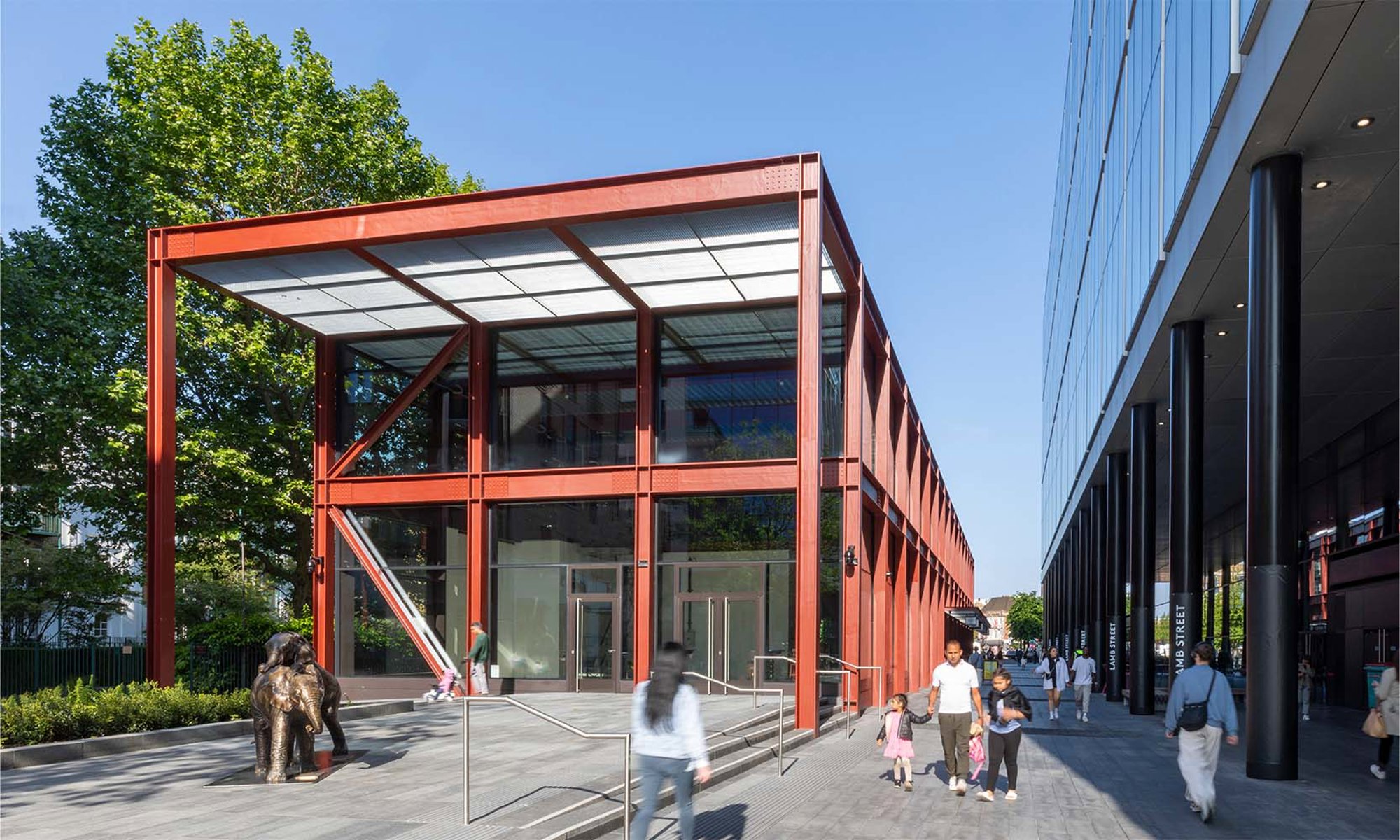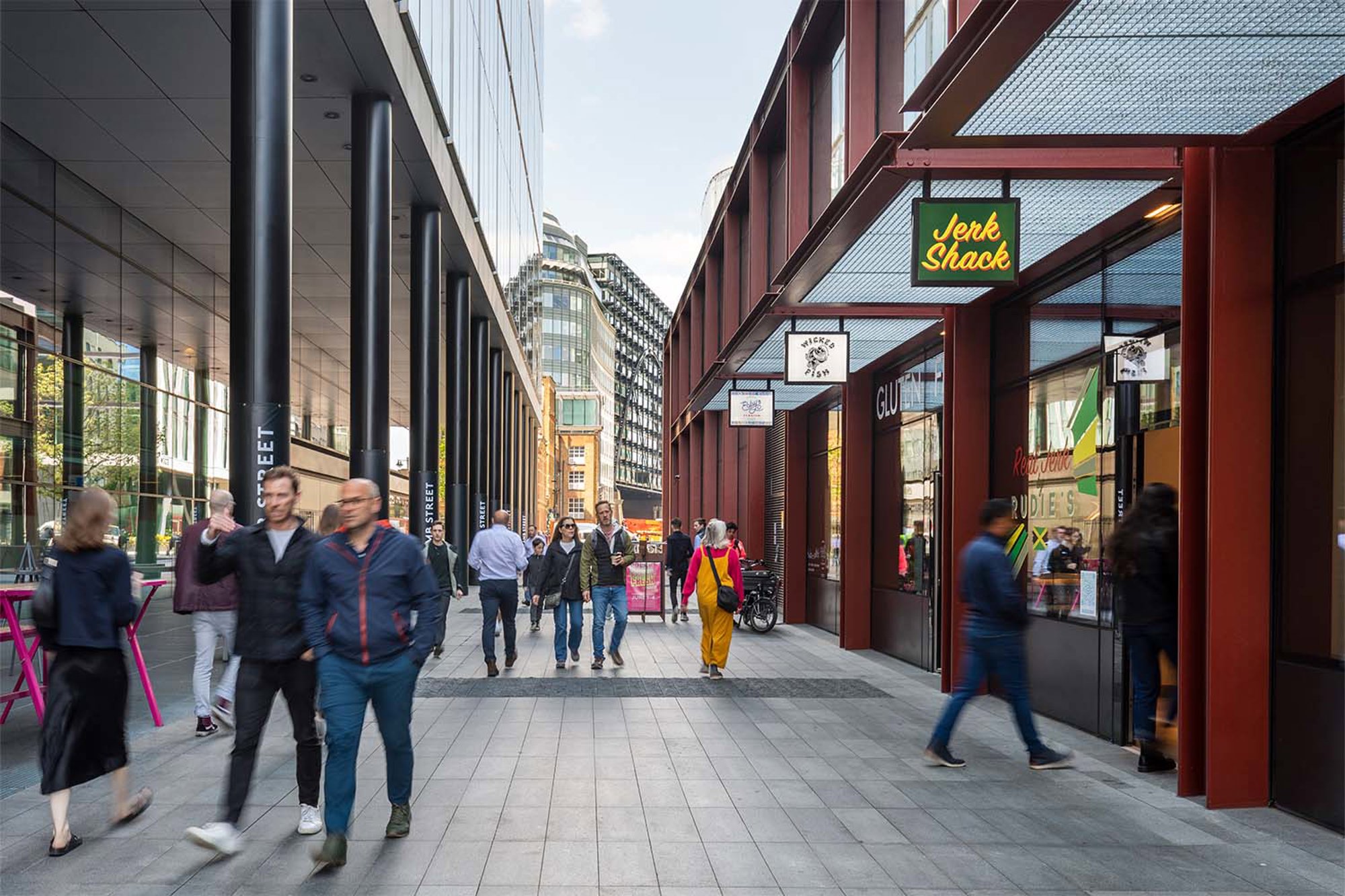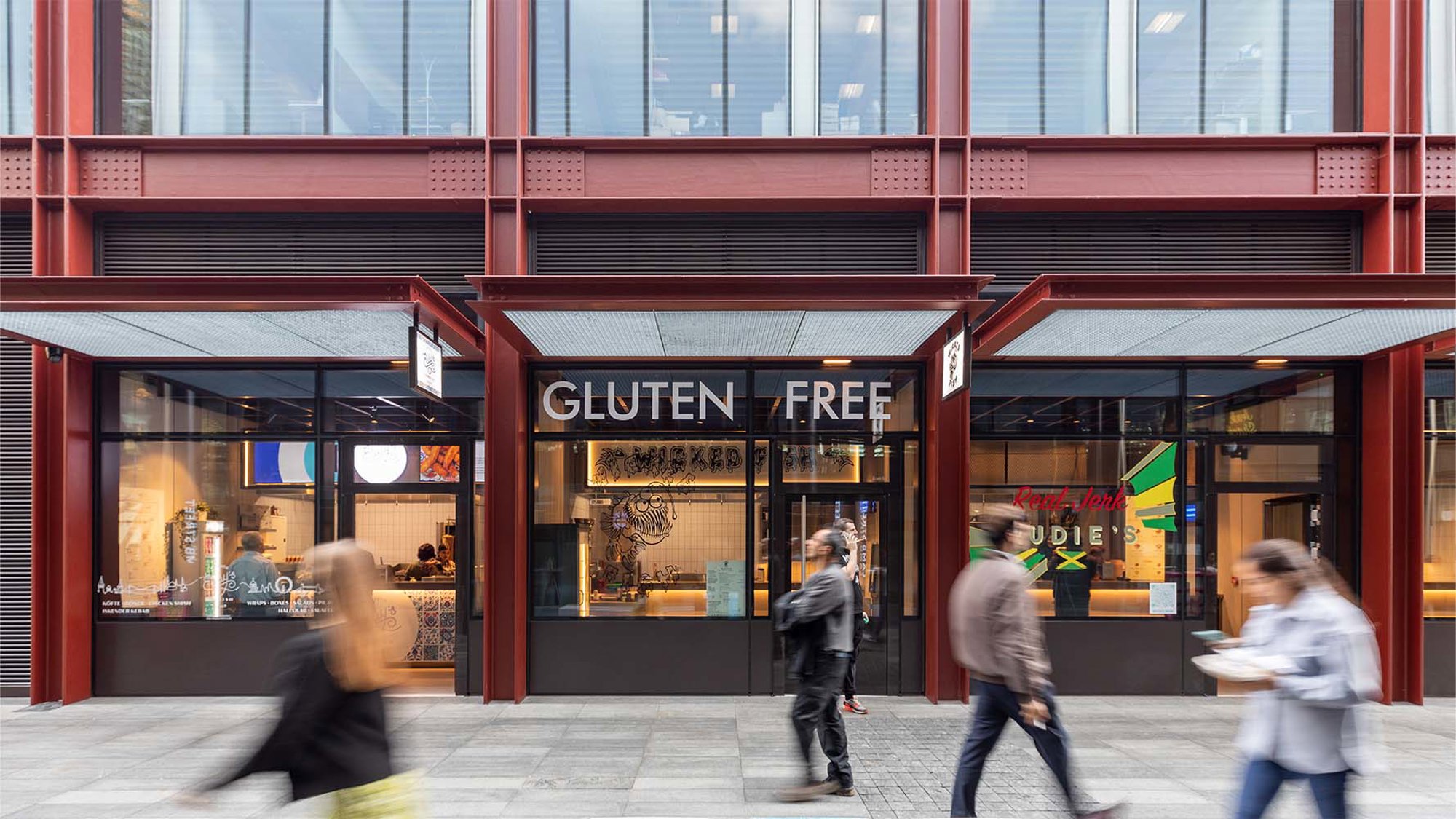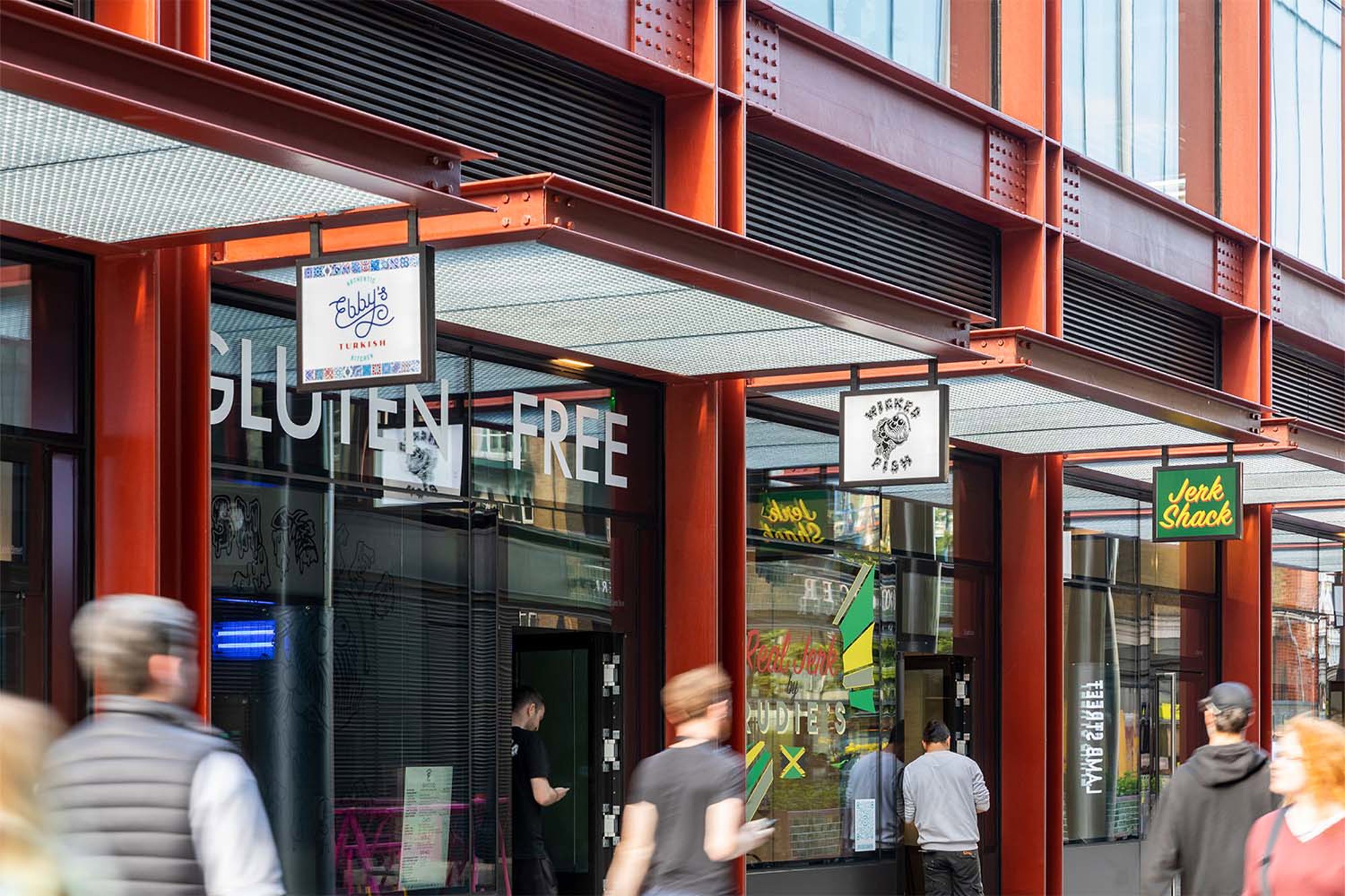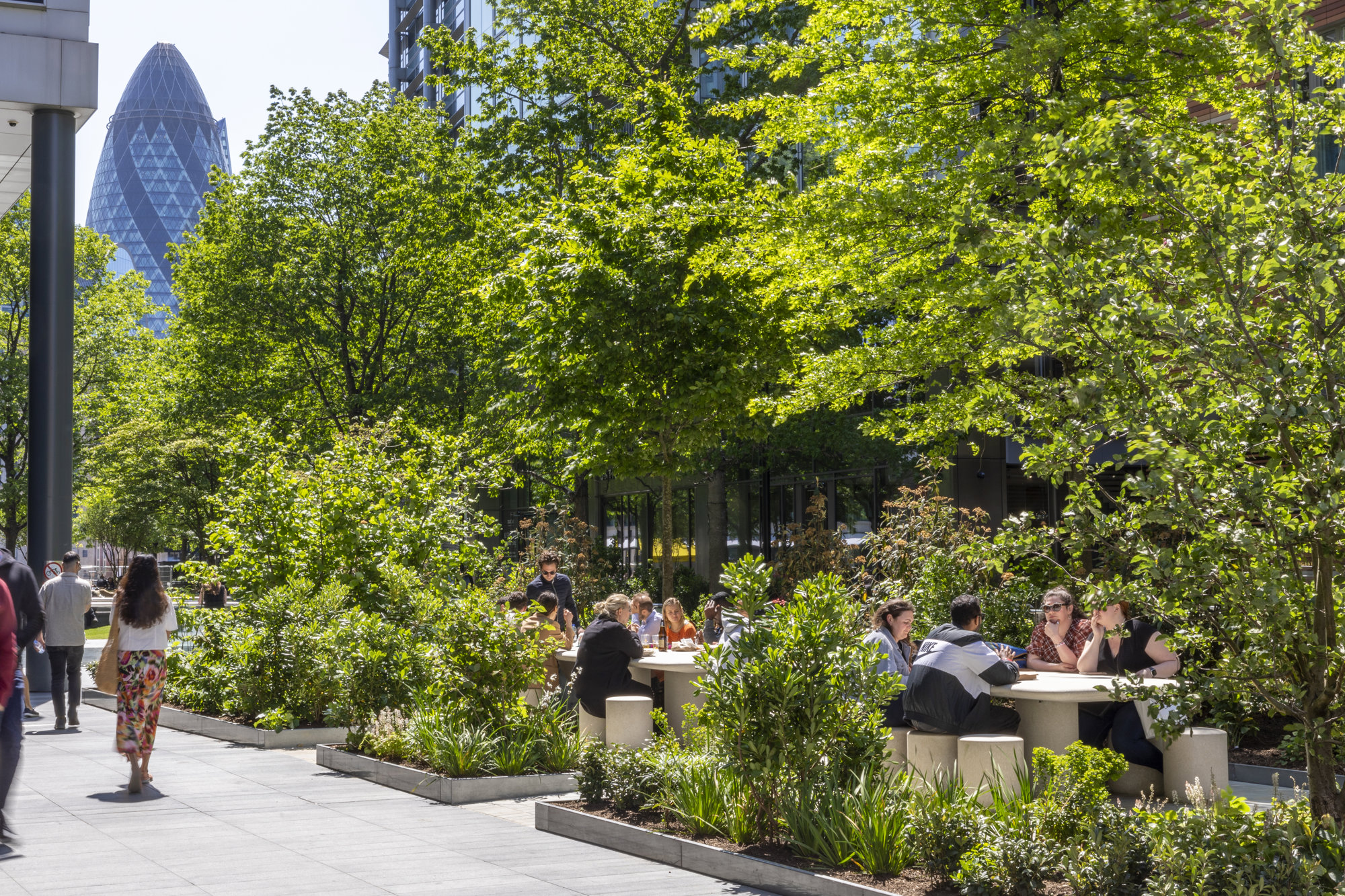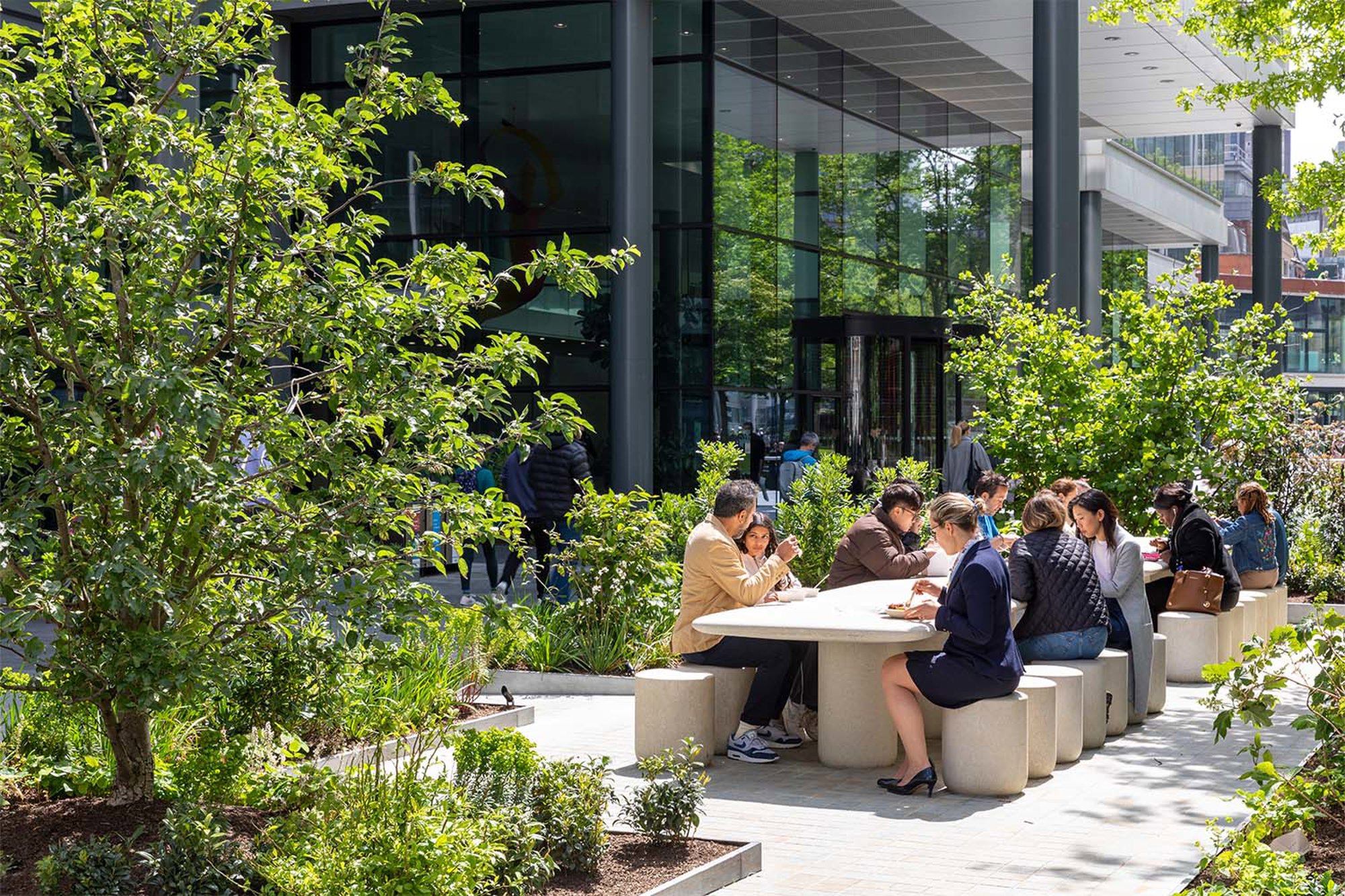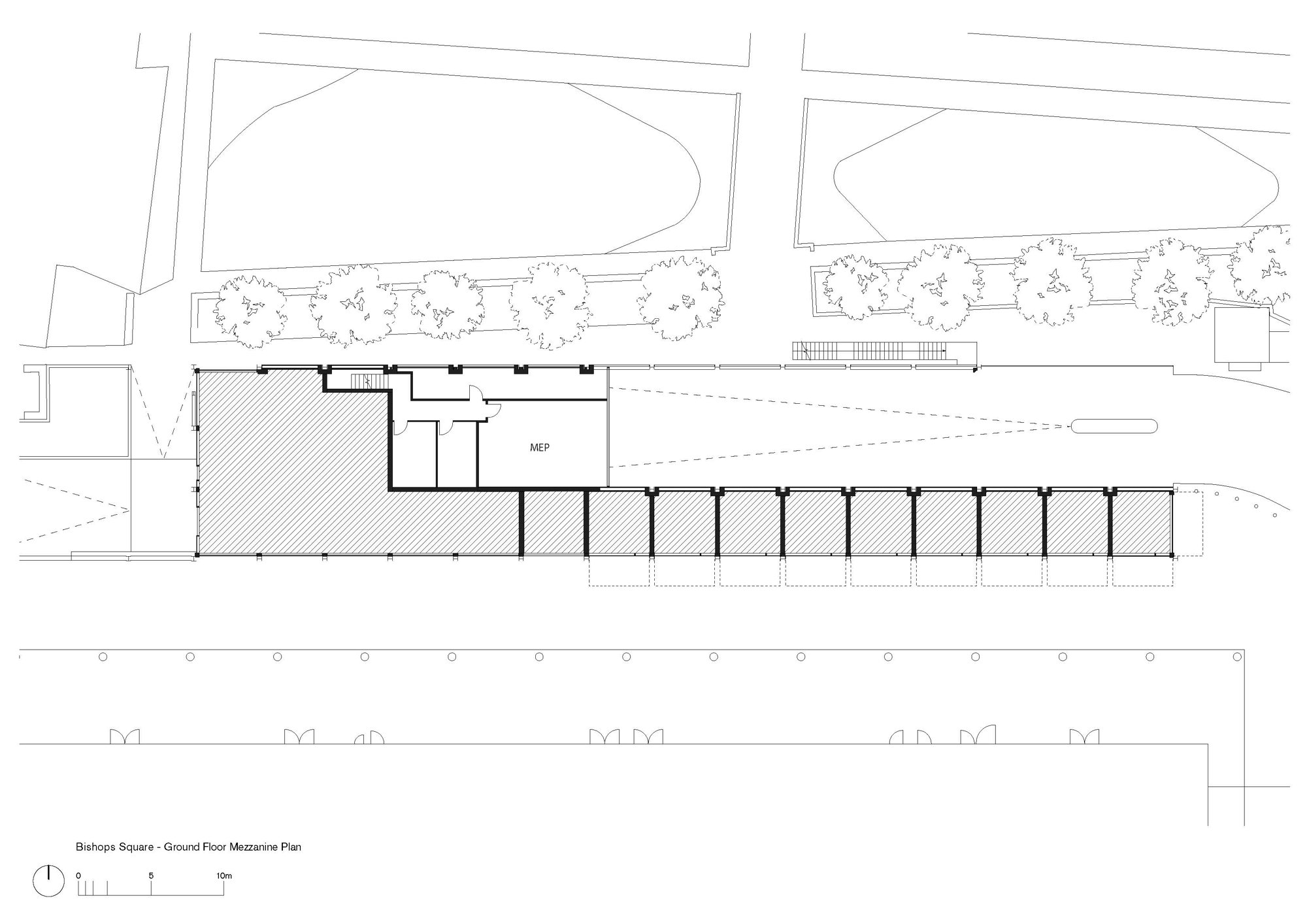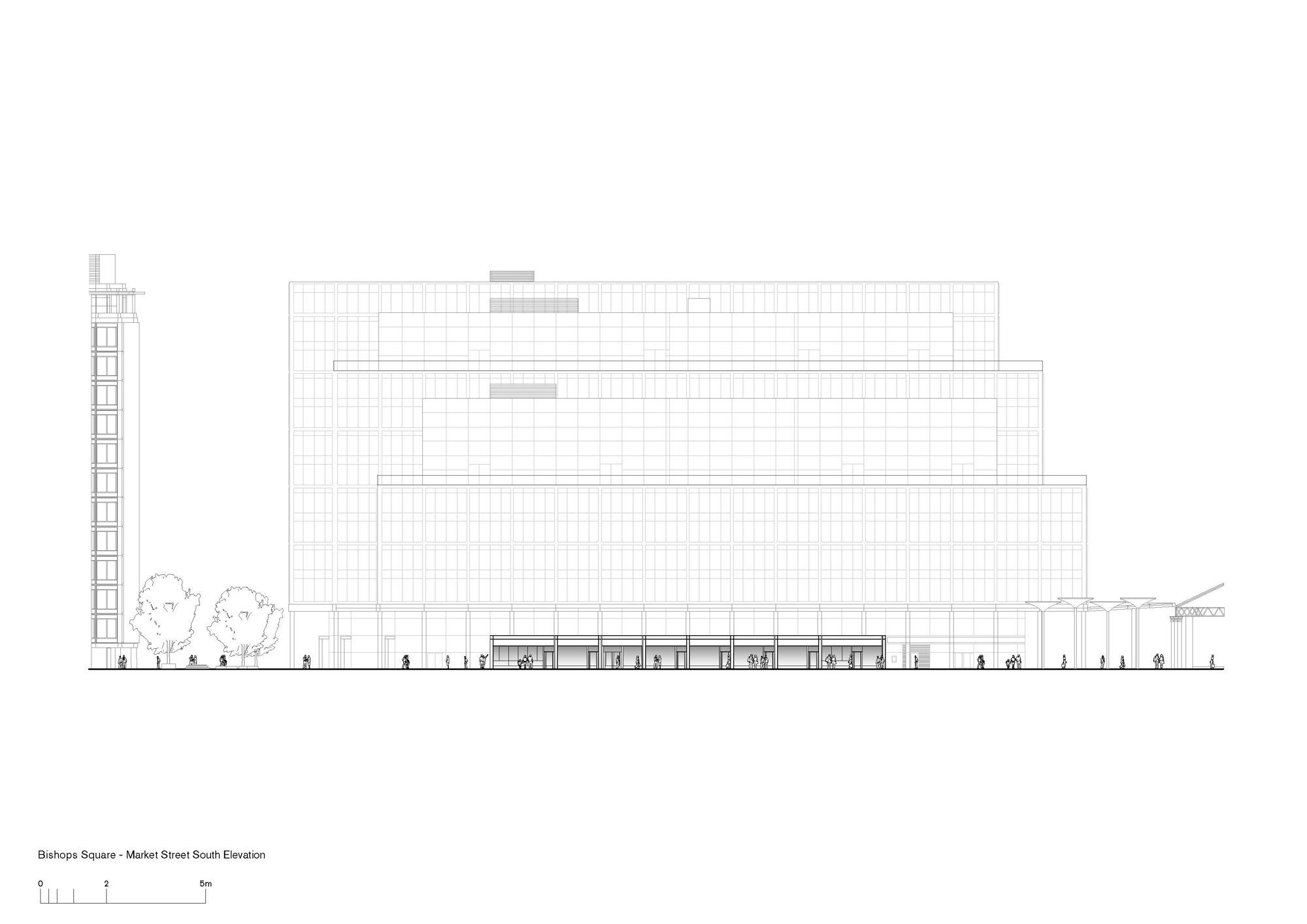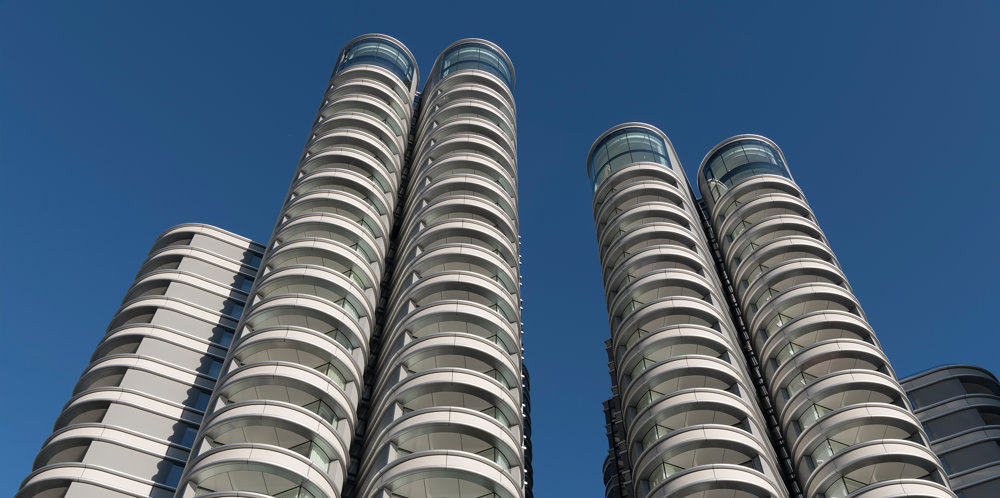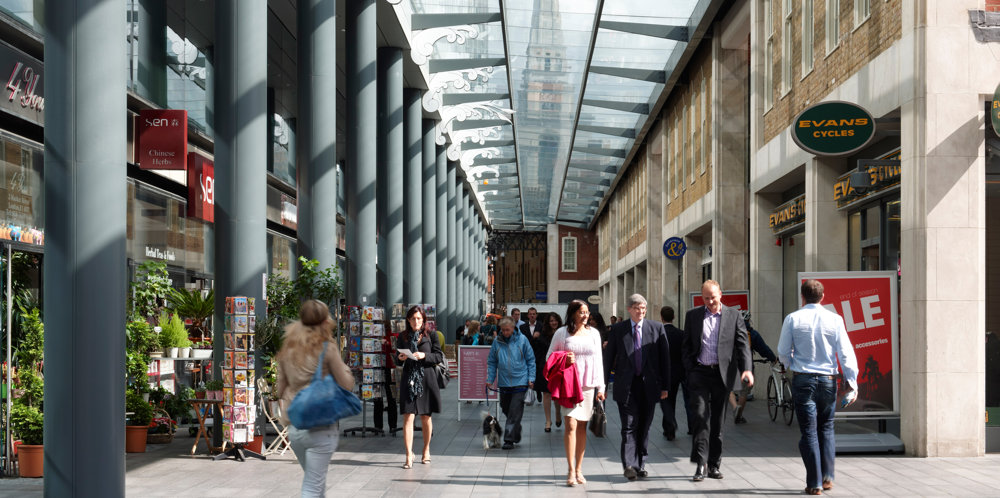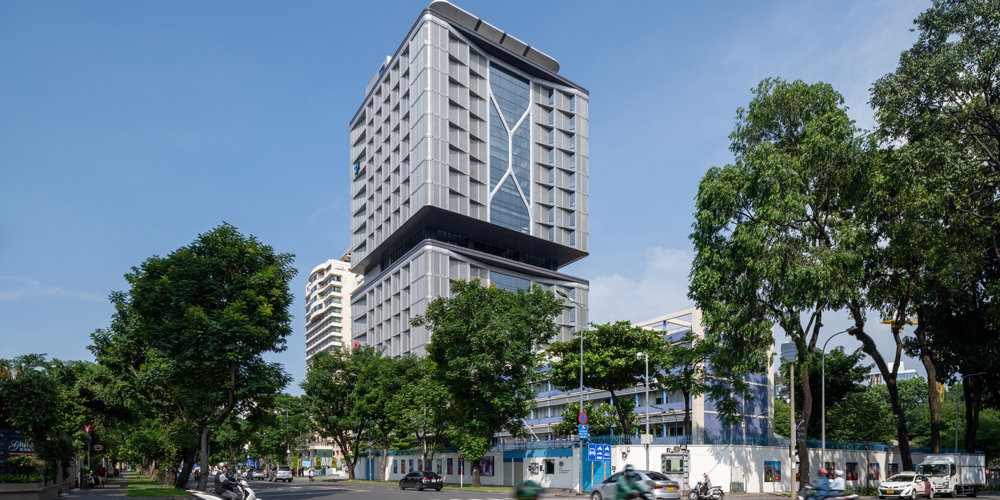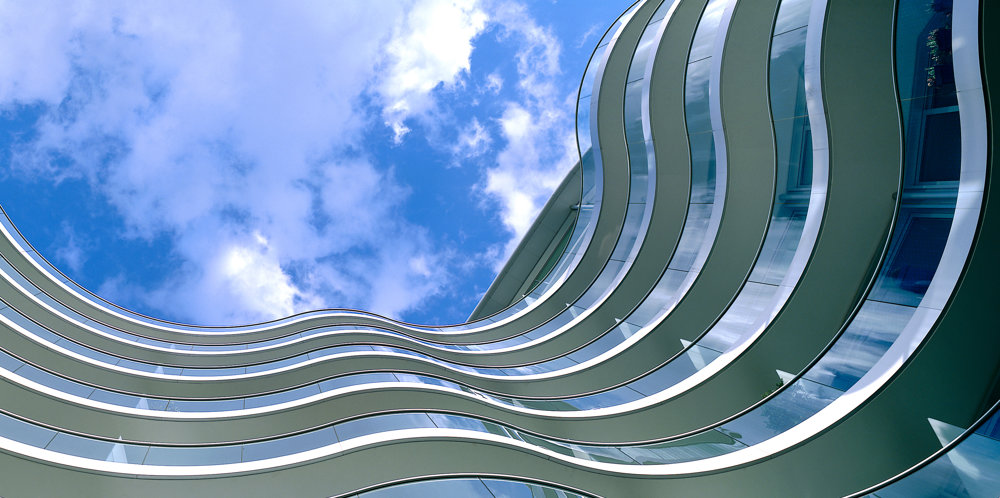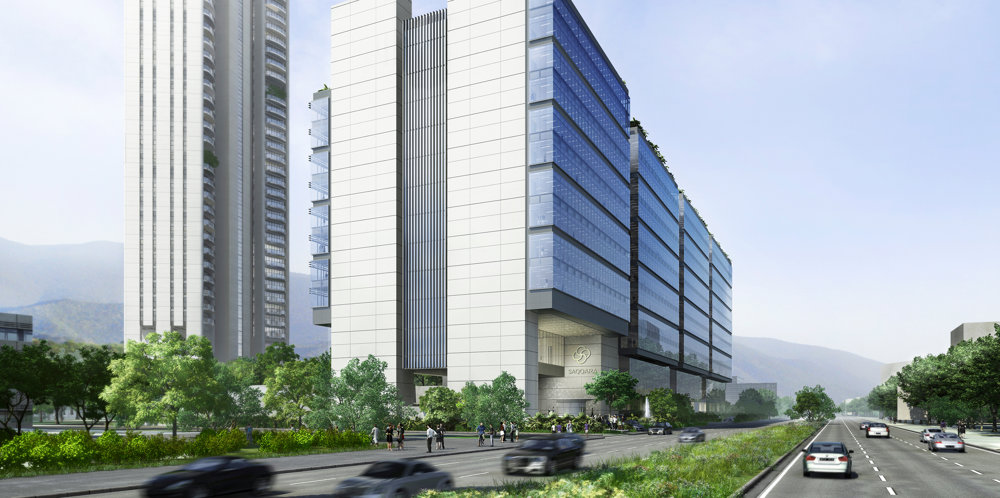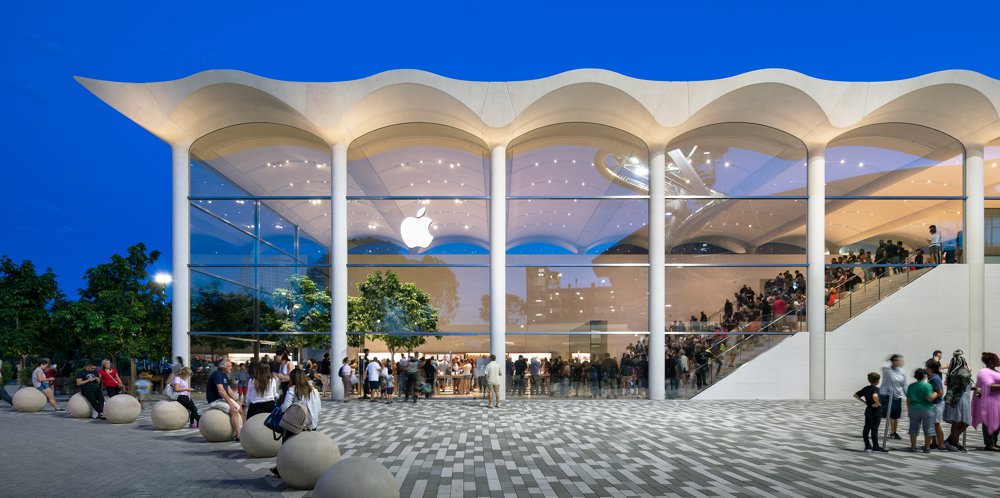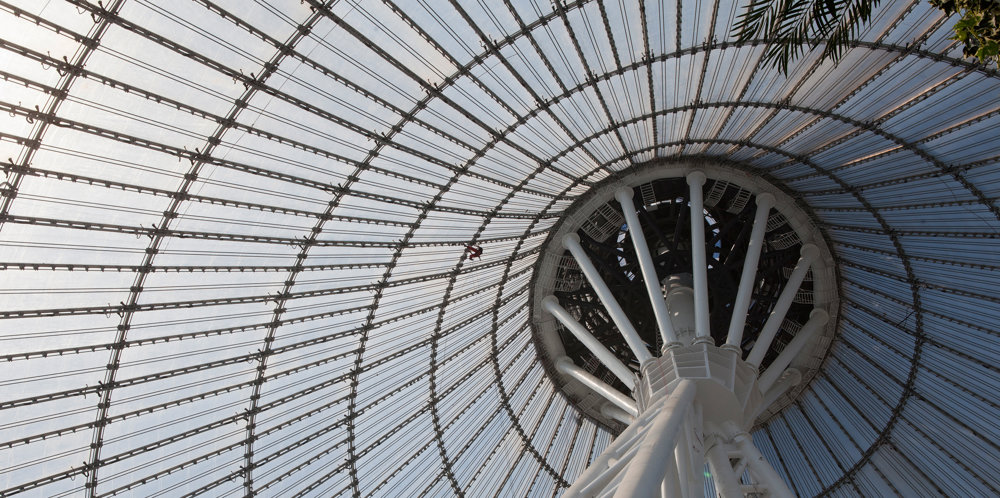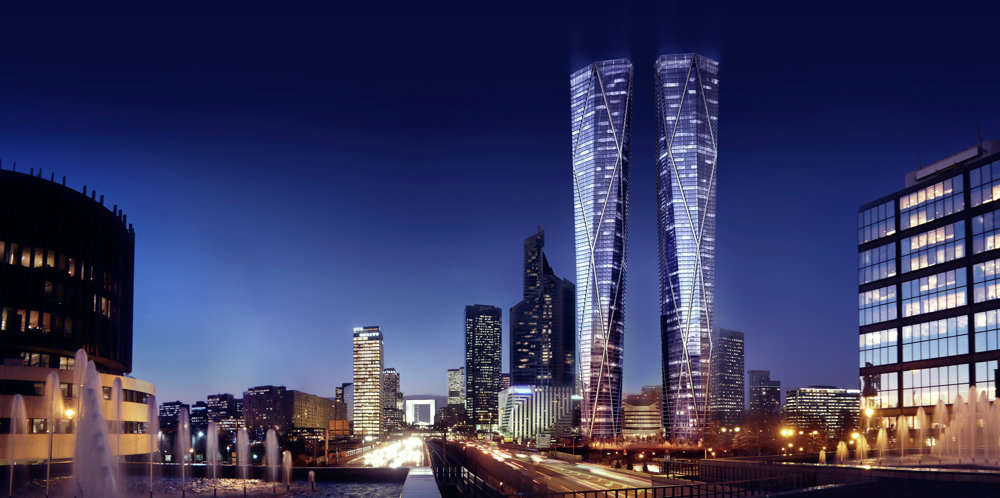The latest phase of the Bishops Square development transforms Lamb Street into a new public space with retail and food kiosks, reimagines Market Street as a vibrant new shopping street, and creates Bishops Square Gardens with new landscaping and bespoke street furniture.
Lamb Street
Inspired by the East End’s historic industrial warehouses, the new oxide red steel structure on Lamb Street acts as a marker for the latest phase of the development and activates the north side of the site. The two-storey building complements the mix of independent retailers and market traders operating in Bishops Square and the wider area.
Smaller retail and food kiosks are located on the ground floor, along an existing service ramp. The kiosks are fitted with fully glazed fronts - which provide maximum transparency to animate the street - and contain fully built-in kitchens for tenants to move into. These food kiosks are flexibly designed for multiple tenants over the course of the building’s life.
A larger unit, on the level above, can be accessed via a double-height entrance space at one end of the building. The structure responds to its immediate surroundings, with warmer natural materials cladding the northern façade that faces Elder Gardens.
Market Street
Building on the success of Foster + Partners’ Old Spitalfields Market redevelopment project, Market Street is reimagined as a vibrant new shopping street that is open to the elements. Shop frontages have been extended outwards, beyond the existing colonnade, narrowing the street and creating a more intimate shopping experience.
To enhance visual interest on the street and break up uniformity, a selection of facade configurations were designed and offered to tenants, to reflect the individual retailer’s specific needs. A signage and awning zone is replicated on every façade to visually unify the various shops and provide protection from the elements.
Bishops Square Gardens
The project creates three distinctive landscaped areas, with bespoke street furniture designed by Foster + Partners’ industrial design team. The design increases the provision and diversity of furniture throughout the square, in harmony with the landscaping.
The Adaptive Plaza serves as a gateway to the heart of Bishops Square. It is a flexible outdoor space that incorporates tiered pyramid seating for informal gatherings or community events. Modular timber benches can be moved easily and placed in different locations to facilitate performances, temporary exhibitions and screenings. The benches provide additional seating or can be pushed together to create a stage.
The Urban Living Room is a naturally shaded space for outdoor meetings and social gatherings. Four large communal tables are surrounded by dense greenery to create a tranquil urban oasis in the centre of Bishops Square. Stools are positioned around the table with spaces for wheelchair users and pushchairs alongside them.
The Lawns significantly increase the amount of green space for local people, office workers and visitors. The existing water feature, Charnel House and a number of mature trees have been retained and fused into the new landscape. In this area, there are seats on the raised edges of the lawns, as well as double-sided and platform benches. The double-sided benches correspond with the landscape and offer a raised surface - with wireless charging for tablets and mobile phones - allowing people to work while facing the lawns. The wider platform benches enable larger groups to sit, work or eat together in the heart of the garden.









